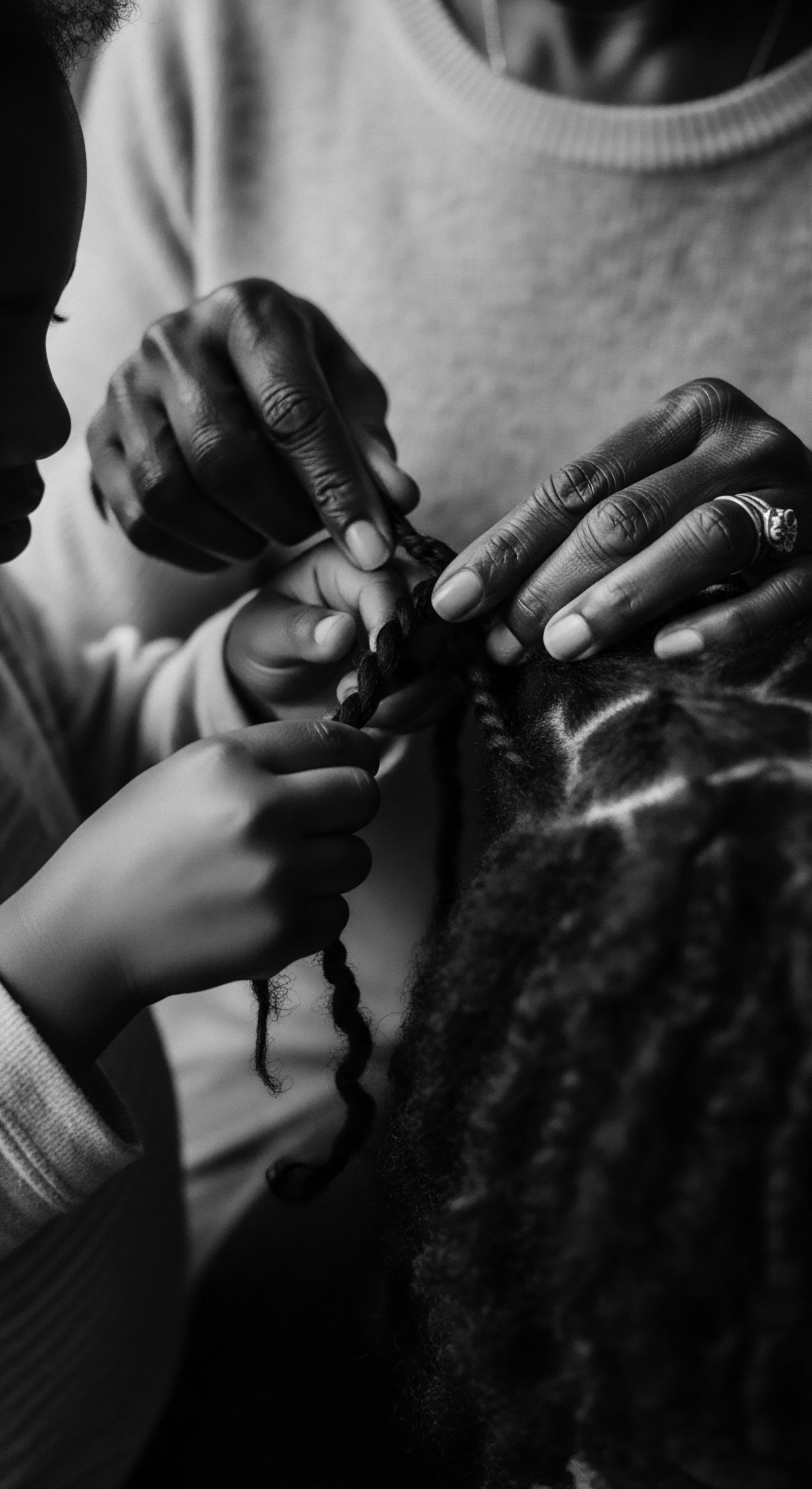
Roots
Consider for a moment the profound intimacy of hair. It stands as a living testament, a whisper carried on the wind from our ancestors. For those whose lineage stretches across the African continent and into the diaspora, each curl, each coil, each gentle wave, carries stories not merely of personal journey, but of collective survival, identity, and ingenuity. Our exploration of what is hair porosity begins not in a sterile laboratory, but in the sun-drenched savannas, along the trade routes, and within the quiet dignity of ancestral homes where wisdom was passed hand to hand, strand by strand.
The very word ‘porosity’ might sound like a modern invention, a term sprung from the lexicon of science. Yet, the concept it describes—the way a hair strand receives and retains moisture—was intuitively understood by those who lived deeply connected to the land and its offerings. They observed, they experimented, they learned from the very fabric of their environment. The subtle characteristics of hair, its thirst or its resistance to drink, guided their hands in preparing remedies, their minds in crafting adornments.

The Sacred Strand’s Structure
To grasp porosity, one must gaze upon the individual hair strand itself, seeing it not as a simple filament, but as a complex biological wonder. Each strand emerges from its follicle, a living expression of our genetic inheritance. The outermost layer, known as the Cuticle, comprises overlapping, shingle-like scales. These cuticular scales dictate how readily substances pass into or out of the hair’s inner core.
In textured hair, these scales possess a unique arrangement and often sit naturally more lifted at points along the fiber, a characteristic particularly pronounced in the elliptical hair fibers common in individuals of African ancestry. This structural distinctiveness is a primary determinant of a strand’s porosity.
Hair porosity exists along a spectrum, commonly categorized into three broad expressions. Low Porosity hair possesses a tightly sealed cuticle, making it hesitant to absorb moisture but equally adept at holding onto it once absorbed. It often appears sleek, perhaps even a bit glossy, though it can suffer from product buildup on its surface. High Porosity hair, conversely, has cuticular scales that are more raised or even damaged.
This allows moisture to enter swiftly, yet it escapes just as quickly, leading to dryness and potential breakage. This hair may appear dull, feel rough, and absorb products with ease. In between lies Medium Porosity, a balanced state where the cuticle opens enough to welcome moisture and then closes sufficiently to keep it.
Understanding hair porosity allows us to listen to the whispers of our hair, connecting modern care with ancestral wisdom about its unique thirst.
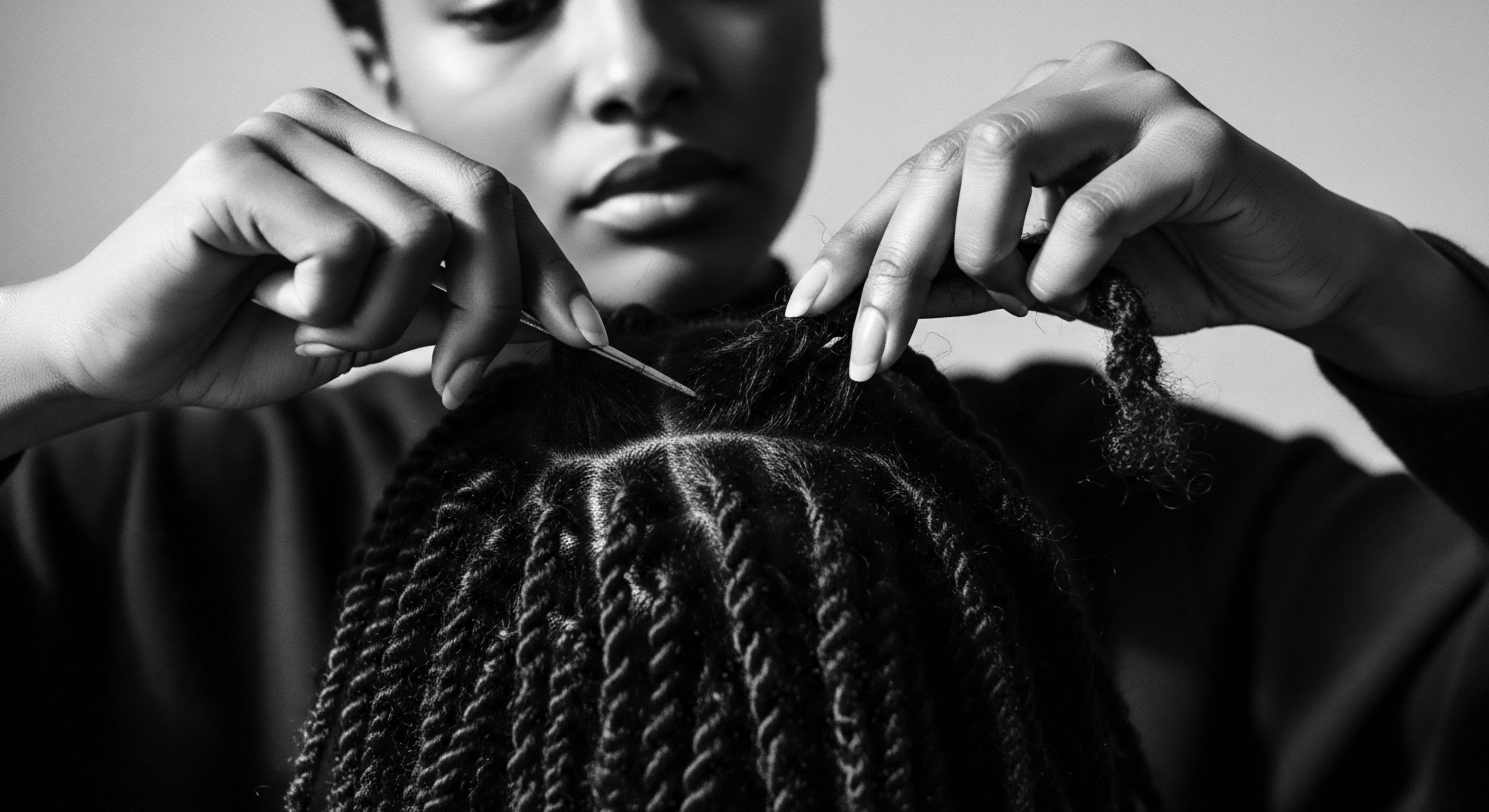
Ancestral Language of Hair
While our forebears did not utter the term ‘porosity,’ their practices spoke volumes about their recognition of these inherent differences in hair. Consider the various hair patterns, the nuances of curl, coil, and wave that distinguish one head from another. In many African cultures, specific names and meanings were ascribed to hair types, often tied to identity, status, or even spiritual connection.
These terms, though not scientific classifications as we know them today, implicitly acknowledged variations in texture and how hair responded to care. The very act of discerning these differences was a precursor to our modern understanding of hair’s innate characteristics.
The knowledge was organic, passed down through generations. A grandmother might instinctively know which oils or clays suited a particular grandchild’s hair, based on generations of observation. This intimate, lived understanding formed the foundation of effective hair care long before microscopes revealed the secrets of the cuticle. The inherent properties of what we now classify as low or high porosity hair were met with a responsive ingenuity, a deep connection to plant life and natural remedies.
This ancient wisdom continues to hold profound relevance. It beckons us to observe our hair with a similar discerning gaze, to feel its texture, to heed its response to water and oils, and to honor its lineage. The science of porosity, then, simply provides a contemporary vocabulary for what our ancestors understood through touch, tradition, and an enduring relationship with the natural world.
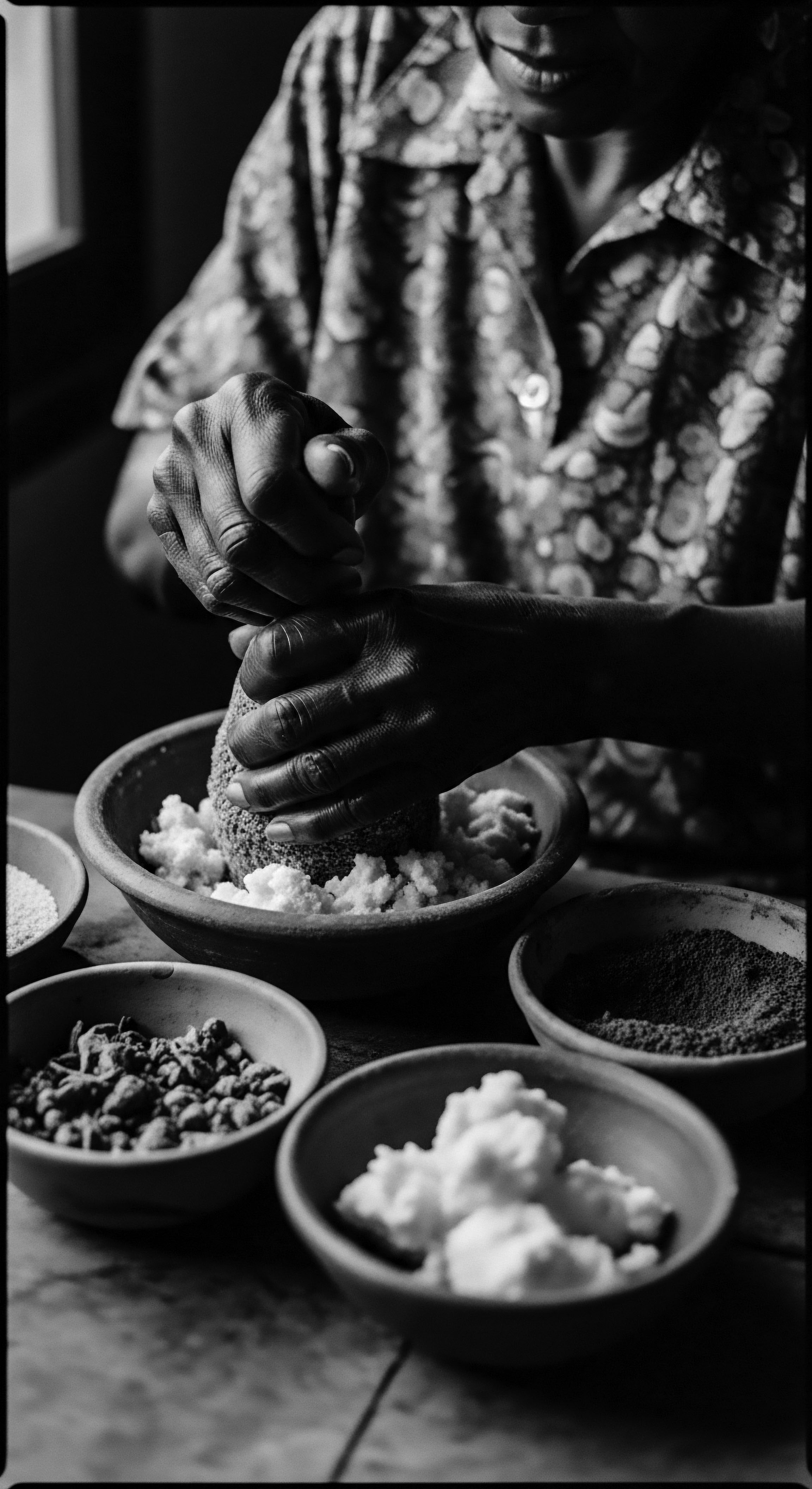
Ritual
The hands that braided, twisted, and adorned hair in ancient times were not merely styling tools; they were conduits of care, tradition, and a deep, often unspoken, comprehension of hair’s needs. The rituals surrounding textured hair were as intricate and varied as the hair patterns themselves, each technique and tool a response to the very characteristics we now call porosity. These practices, honed over centuries, represent a living archive of solutions for hair that yearns for moisture, or hair that holds it close.

How Did Ancestors Manage Hair’s Thirst?
In many ancestral communities, styling was deeply intertwined with health and preservation. Protective styles, for instance, were not merely decorative; they served to shield the hair from environmental rigors, minimizing moisture loss for high porosity strands, or sealing in applied nourishment for all types. These traditional styles, such as Cornrows, Braids, and Bantu Knots, provided a physical barrier, allowing natural oils and applied botanical treatments to work their magic without constant exposure to drying winds or harsh sun. This practice speaks to an innate understanding of how to manage moisture dynamics, regardless of explicit knowledge of cuticular scales.
The choice of ingredients, too, reflected a nuanced awareness of hair’s differing needs. Communities across Africa and the diaspora used a wealth of natural substances, each offering distinct properties. For hair that seemed to absorb everything yet remain dry—what we might recognize as high porosity—heavier butters and oils, rich in occlusive properties, were favored to create a sealing layer. Conversely, lighter, more penetrating oils might have been used for hair that struggled to receive moisture.
Traditional styling was a profound language of hair preservation, a testament to an enduring understanding of each strand’s thirst.
The very act of co-washing, a concept gaining modern traction, finds its echoes in ancestral cleansing practices. Some traditions employed cleansing clays or plant-based infusions that purified without stripping hair of its vital moisture, leaving the cuticles undisturbed and respecting the natural state of hair that might already struggle with moisture retention.
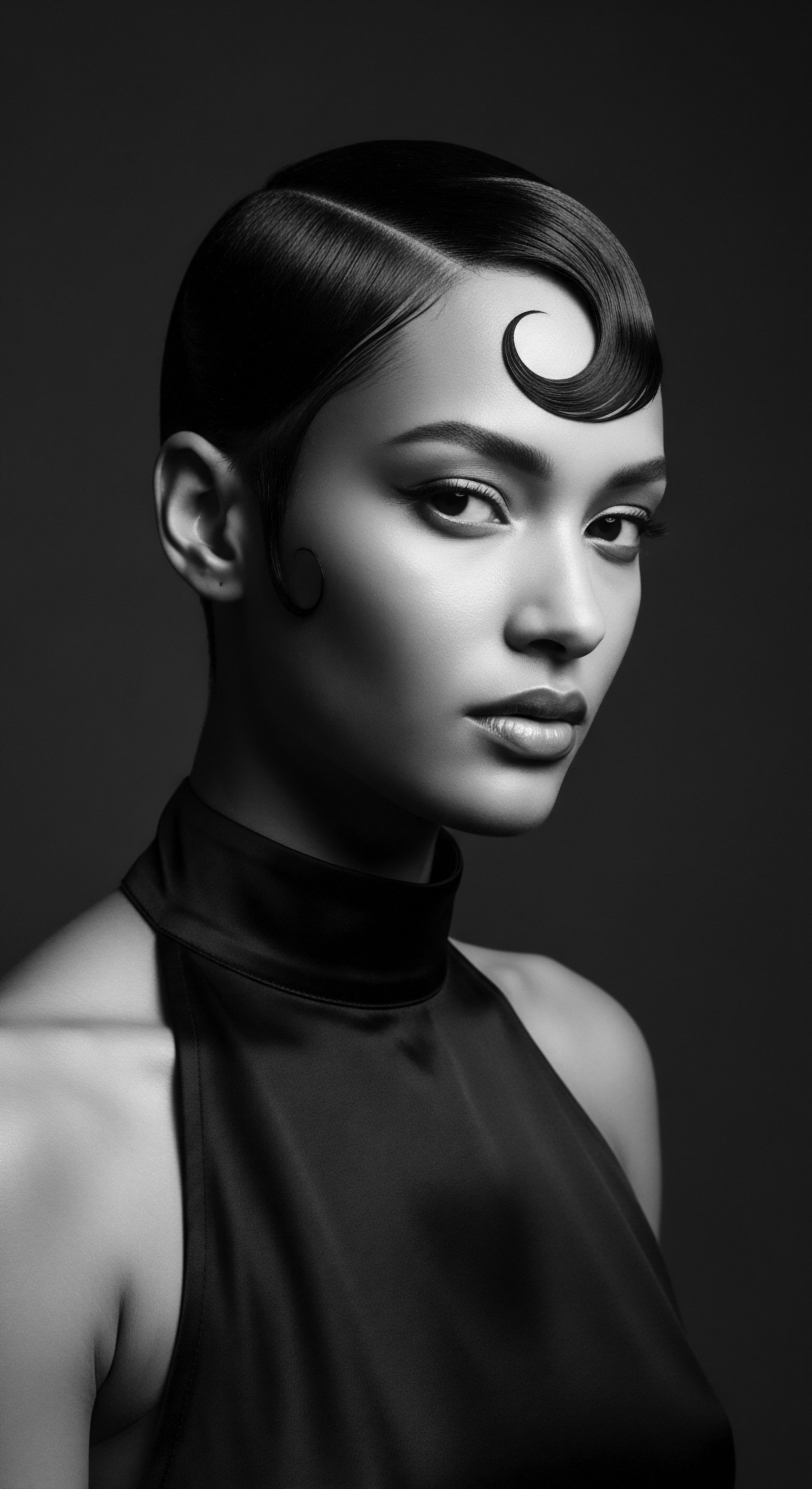
Tools of Tradition and Transformation
The tools used in ancestral hair care were often crafted from natural materials—wood, bone, or horn—each designed with precision to respect the hair’s integrity. Wide-tooth combs, carefully carved, facilitated gentle detangling, preventing mechanical damage that could lift cuticles and exacerbate porosity issues. Adornments were not just embellishments; they sometimes served practical purposes, securing protective styles or aiding in the application of conditioning substances.
The practice of oiling, often a communal ritual, also played a central role. From the painstaking creation of butters to the careful infusion of botanical extracts, these emollients were worked into the hair with intention. This systematic application allowed for layers of moisture and sealant, a technique that mirrors modern understanding of sealing porosity to retain hydration. The selection of specific plant oils or butters for various hair conditions speaks to an accumulated wisdom, a traditional botanical science passed through generations.
Consider, for instance, the ceremonial importance of hair in many African societies, where intricate styles were reserved for specific life stages or societal roles. The time and communal effort invested in these processes ensured that hair was not merely styled, but meticulously cared for, reinforcing its strength and vibrancy. These rituals underscore that attention to hair health, implicitly including porosity, was not an afterthought, but an integral part of cultural expression and well-being.
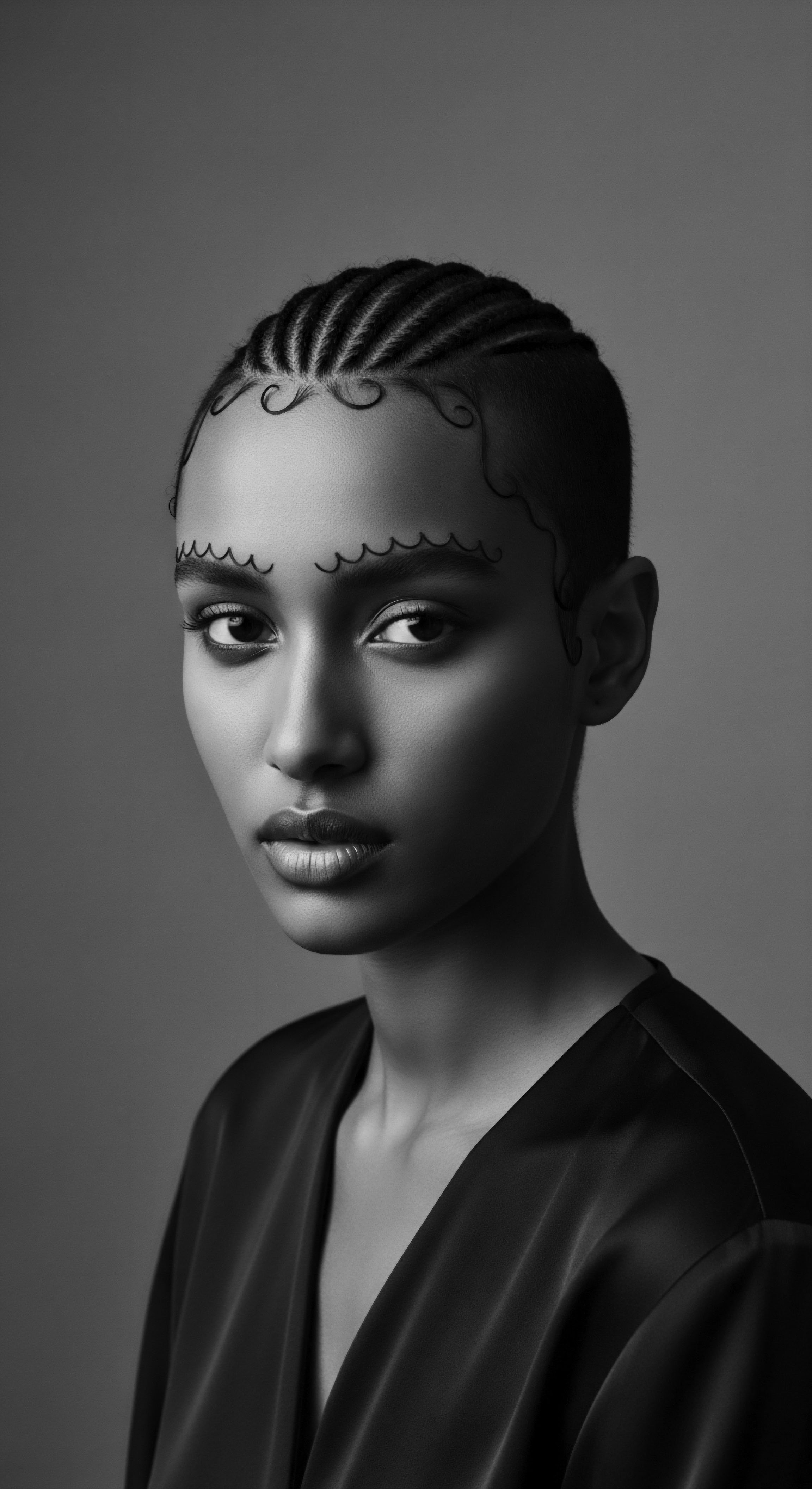
Relay
The journey of textured hair care, from ancient practices to our contemporary understanding, is a powerful relay, a passing of the torch where ancestral wisdom illuminates modern science. What we now term ‘hair porosity’ provides a scientific language for phenomena understood through generations of lived experience and hands-on care. Our challenge today is to harmonize this scientific clarity with the soulful intelligence of our forebears, creating regimens that honor both the unique biology of our strands and the enduring legacy of our communities.
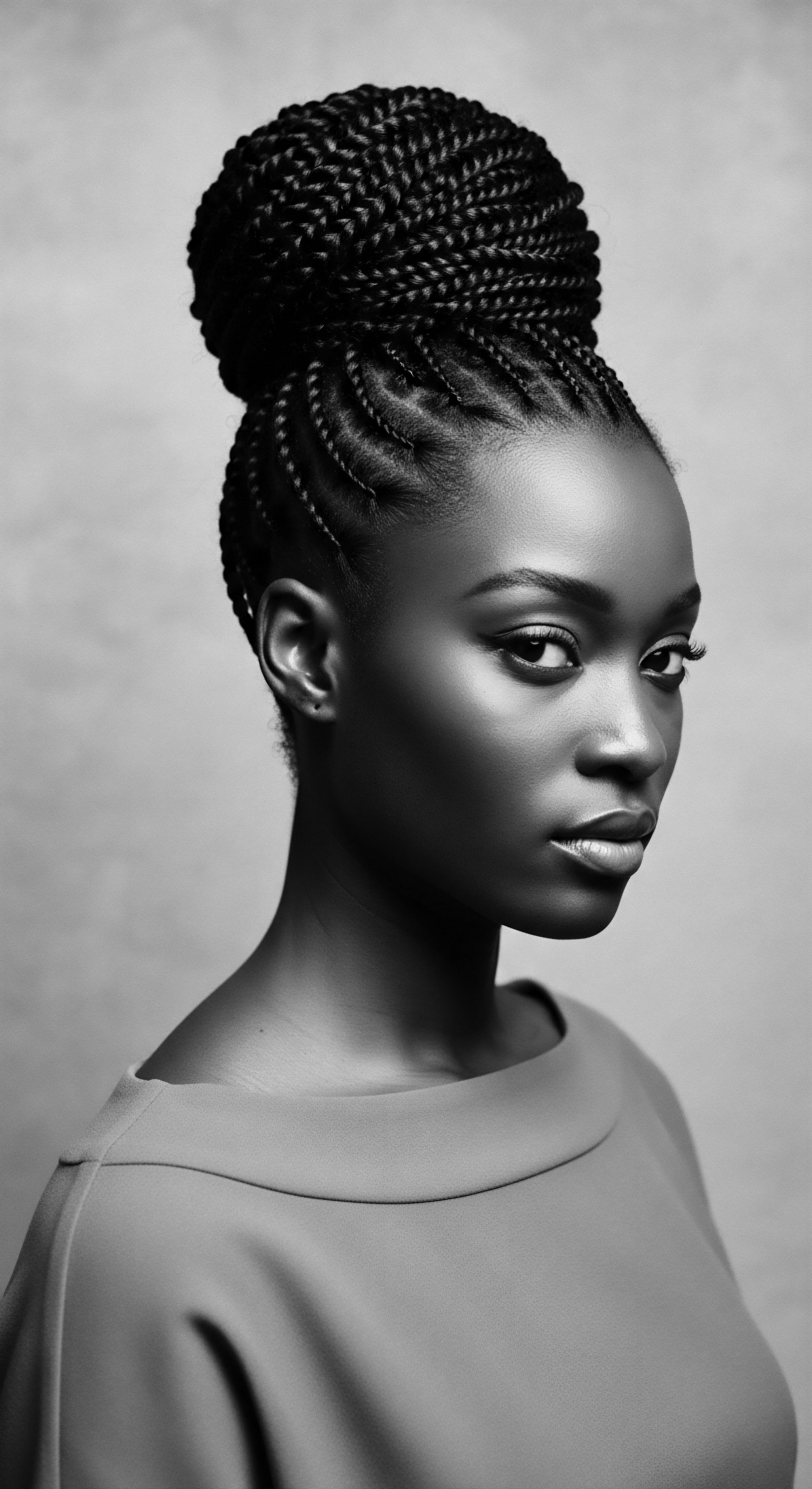
Ancestral Wisdom and Modern Porosity Solutions
One of the most potent examples of ancestral wisdom meeting modern porosity understanding can be found in the pervasive use of Shea Butter. Derived from the nuts of the African shea tree (Vitellaria paradoxa), this rich, unrefined butter has been a cornerstone of West African hair care for centuries. Communities used it to protect skin and hair from the sun’s intensity and the dry climate, intuitively recognizing its capacity to seal moisture within the hair fiber. This traditional application effectively addressed the needs of what we now classify as high porosity hair—hair with an open cuticle that readily accepts moisture but struggles to retain it.
Shea butter’s fatty acid composition, including oleic and linoleic acids, allows it to create a protective barrier on the hair shaft, preventing water loss. This function, the sealing of the cuticle to maintain hydration, is a direct, practical response to managing porosity, a knowledge carried in the hands and rituals of countless generations.
In fact, the contemporary Liquid, Oil, Cream (LOC) Method or its variant, Liquid, Cream, Oil (LCO), widely adopted in the natural hair community for moisture retention, mirrors these ancestral layering techniques. Both methods layer hydrating liquid, sealing oils, and creamy emollients to trap moisture within the hair. This method effectively addresses porosity concerns, particularly for high porosity hair.
The historical use of shea butter as a final sealant in traditional regimens is a powerful antecedent to this modern scientific approach, demonstrating an implicit understanding of creating a lasting moisture barrier. This continuity across time underscores that the efficacy of these methods, now validated by science, was first discovered through observation and practice within textured hair heritage.
The rich legacy of shea butter in hair care showcases how ancestral practices intuitively managed hair porosity, long before the term existed.

Nighttime Sanctuary and Porosity’s Protection
The mindful protection of hair during rest is another enduring practice with roots deep in heritage, directly impacting porosity management. The practice of covering hair at night, whether with wraps of cloth, scarves, or later, bonnets, was born from a practical understanding of how friction and environmental exposure could compromise hair health. For both low and high porosity hair, nighttime protection is crucial.
High porosity hair, prone to losing moisture, benefits immensely from being encased, allowing any applied moisture to stay within the strand rather than evaporating or being absorbed by cotton pillowcases. Low porosity hair, while better at retaining moisture, can still suffer from breakage due to friction, which can eventually lift its tightly bound cuticles, shifting its porosity characteristics over time.
These sleep rituals reflect a profound respect for the hair’s integrity, a recognition that the daily manipulation and styling needed a period of restorative rest. The silk or satin bonnets favored today are modern refinements of this ancient wisdom, offering a smooth surface that reduces friction, preserving the cuticle’s integrity and thus the hair’s natural porosity balance. This thoughtful, intentional care, passed down through matriarchal lines, is a testament to an abiding commitment to hair health that transcends mere aesthetics.
- Shea Butter ❉ A traditional African emollient, historically used to seal moisture, anticipating modern solutions for high porosity hair.
- Moringa Oil ❉ Utilized in some African communities for its nourishing properties, potentially aiding in moisture regulation for various porosities.
- Hibiscus Extracts ❉ Traditionally used for conditioning and shine, these plant derivatives can support hair health and moisture retention.
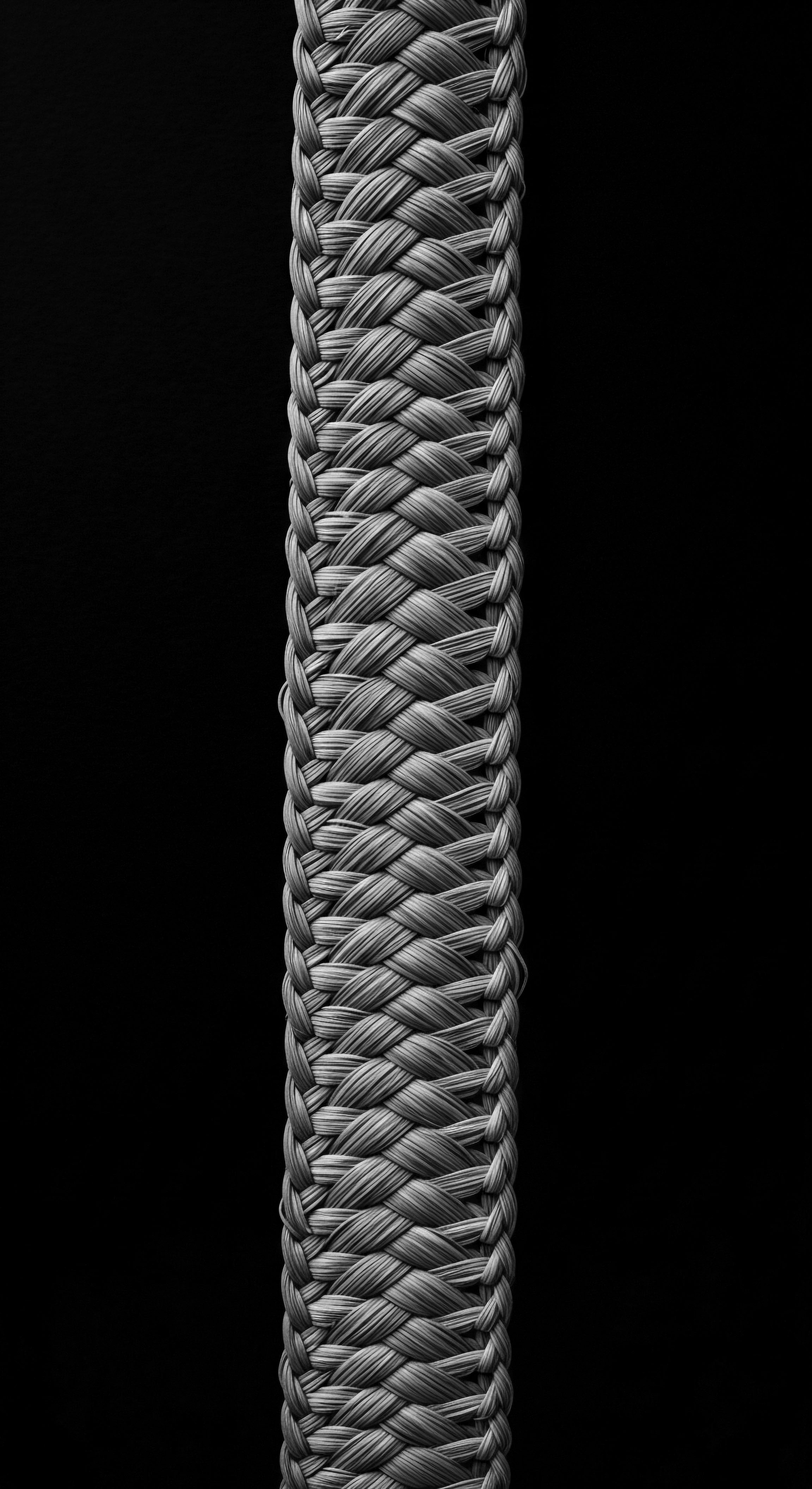
Problem Solving Through a Heritage Lens
When we encounter challenges with our hair today—dryness, breakage, or difficulty styling—porosity offers a diagnostic lens. Yet, this is not a solely modern concept. Our ancestors, faced with similar issues, devised remedies rooted in the same principles. For hair struggling with persistent dryness, much like high porosity hair, they might have turned to methods that facilitated deeper absorption, such as warming oils before application, or incorporating humid environments, perhaps through steam from cooking fires, to open the cuticle and allow beneficial ingredients to penetrate more deeply.
Consider the wisdom of protein treatments. While explicit protein treatments are a modern salon staple, traditional practices often incorporated ingredients that would strengthen the hair. Certain plant-based rinses or even the use of fermented rice water in some Asian traditions, which contains amino acids, provided a natural form of protein reinforcement, helping to fortify the hair structure against damage, a benefit particularly useful for compromised, high porosity hair.
The emphasis was always on working with the hair, not against it, understanding its unique needs and responding with thoughtful, natural solutions. This deep heritage of responsive care continues to illuminate our path toward healthy, vibrant hair.
| Traditional Practice Oiling with Heavy Butters (e.g. Shea) |
| Implicit Porosity Understanding Sealing in moisture for hair prone to dryness (high porosity). |
| Modern Parallel LOC/LCO Method, heavy sealants. |
| Traditional Practice Protective Styling (Braids, Twists) |
| Implicit Porosity Understanding Minimizing environmental moisture loss, reducing cuticle damage. |
| Modern Parallel Low manipulation styling, long-term hair health. |
| Traditional Practice Nighttime Headwraps/Scarves |
| Implicit Porosity Understanding Protecting hair from friction and moisture absorption by surfaces. |
| Modern Parallel Silk/satin bonnets, pillowcases. |
| Traditional Practice Plant-Based Rinses for Strength |
| Implicit Porosity Understanding Fortifying damaged strands, enhancing structural integrity. |
| Modern Parallel Protein treatments, bond-building conditioners. |
| Traditional Practice These cross-generational practices affirm a profound connection between ancestral knowledge and contemporary hair science. |
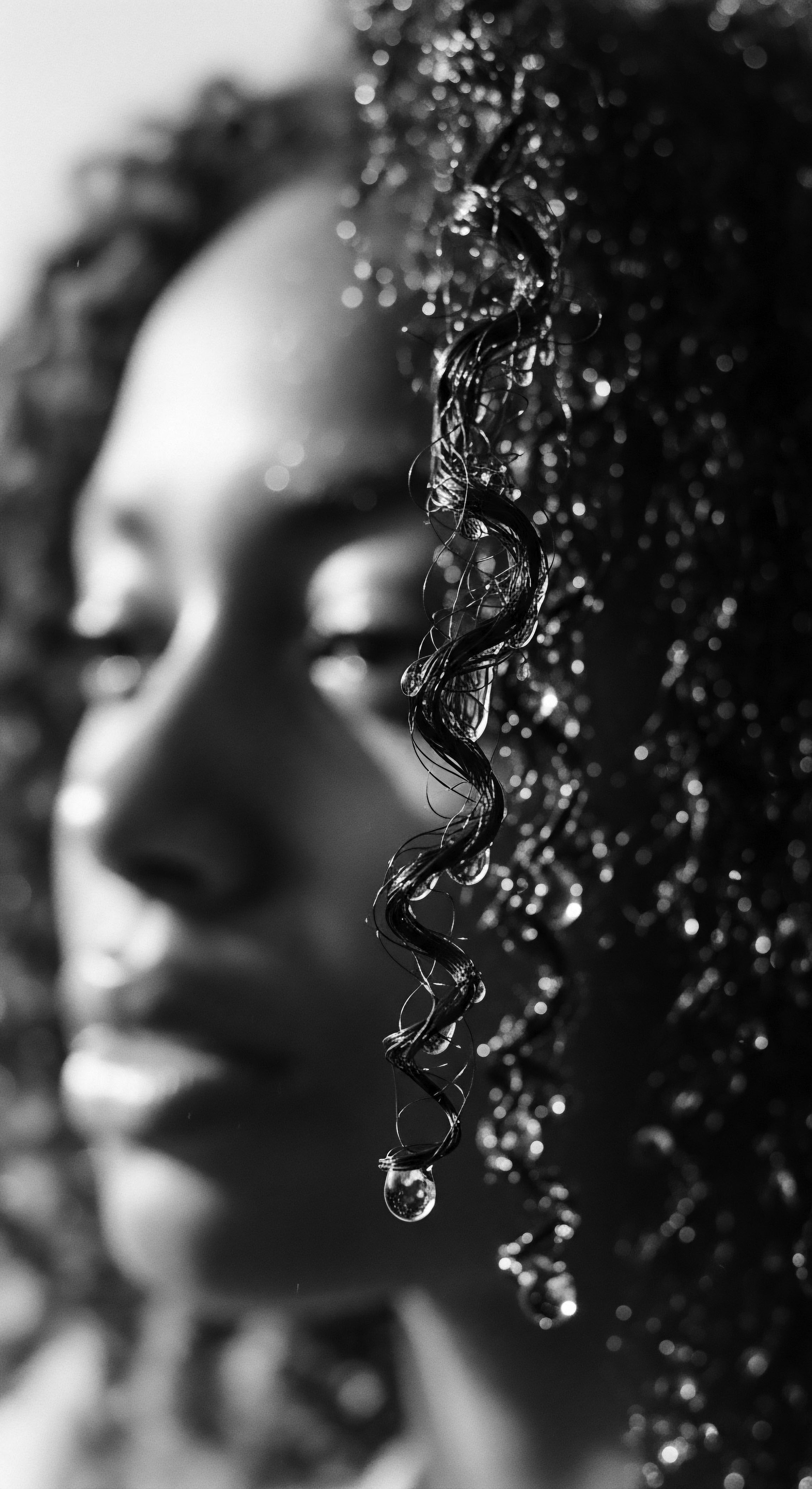
Reflection
To understand what is hair porosity is to receive an invitation to connect with a living legacy. It is to recognize that the scientific framework we use today merely articulates the profound, intuitive wisdom passed down through generations within textured hair heritage. Each strand holds within it a narrative of resilience, innovation, and an unwavering commitment to beauty that defies time and circumstance.
The journey from elemental biology, through the tender threads of living tradition, to the unbound helix of identity, reveals a circularity of knowledge. The ancestral mother who carefully selected shea butter for her child’s thirsty coils, or braided intricate patterns to protect their hair from the elements, was, in her way, a scientist. She observed, she adapted, and she transmitted vital knowledge, not through textbooks, but through touch, through example, through the very rhythm of daily life.
Our contemporary pursuit of hair wellness, guided by an understanding of porosity, becomes far richer when we ground it in this ancestral wisdom. It allows us to move beyond mere product application toward a practice rooted in respect—respect for our hair’s unique design, respect for the natural world that provides our remedies, and respect for the powerful heritage that flows through every curl and coil. We are not simply caring for hair; we are honoring a lineage, continuing a tradition, and affirming the luminous soul of each strand. This ongoing dialogue between past and present, between science and spirit, ensures that the story of textured hair care remains vibrant, deeply personal, and forever connected to its rich, enduring heritage.
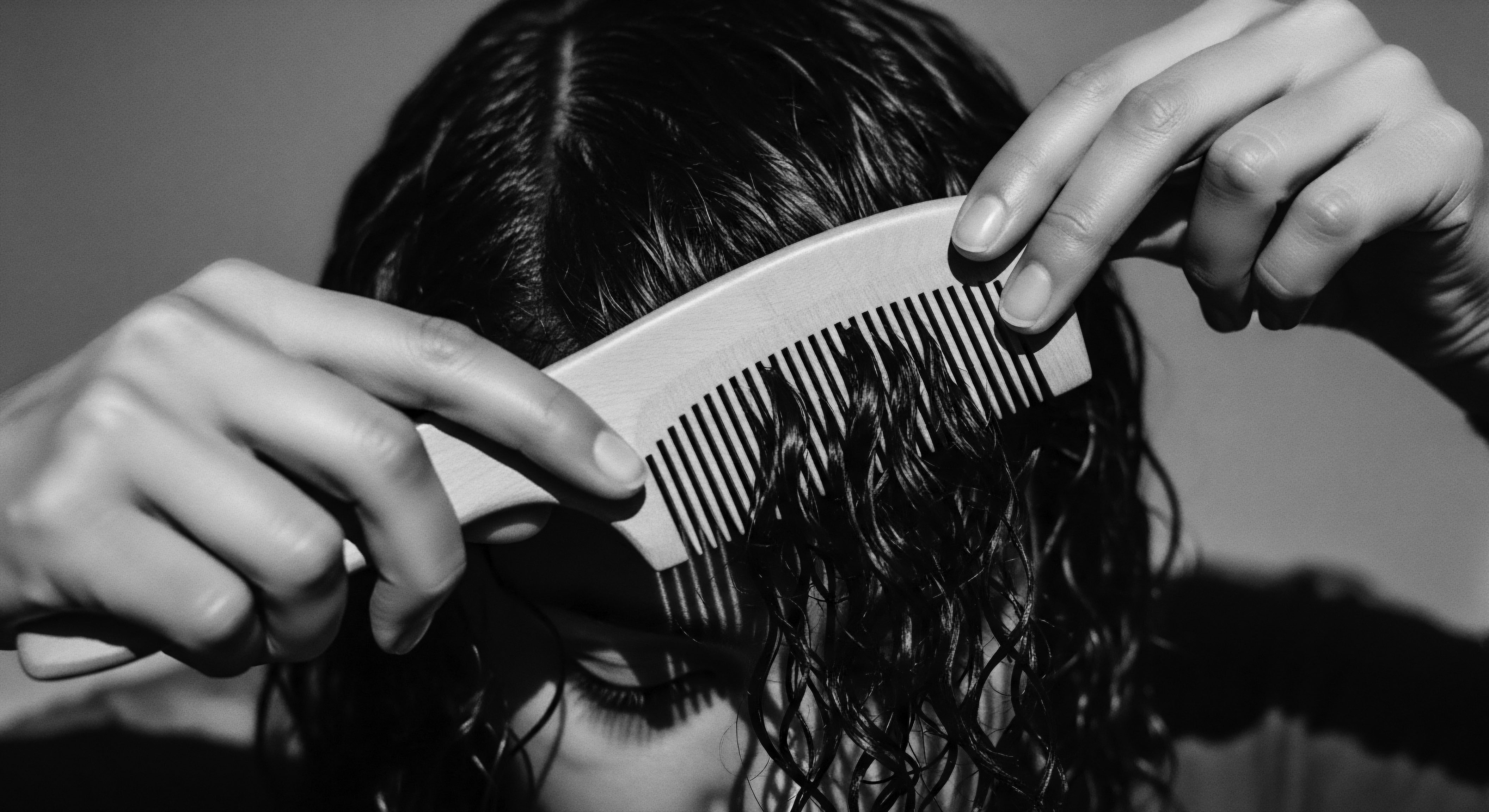
References
- University of Salford Students’ Union. (2024). The Remarkable History Behind Black Hairstyles.
- Livara Natural Organics. (2023). African Ingredients for Healthy Hair ❉ Shea Butter.
- Henna Morena. (2022). All the uses of Shea Butter.
- Wong, N. Williams, K. & Tolliver, S. (2025). Historical Perspectives on Hair Care and Common Styling Practices in Black Women. MDEdge.
- The Diva Shop Nigeria. (2023). Why We Love Shea Butter for Natural Hair.
- Wong, N. Williams, K. & Tolliver, S. (2025). Historical Perspectives on Hair Care and Common Styling Practices in Black Women.
- Healthline. (2018). Shea Butter for Hair ❉ Raw, Hair Growth, and Natural Hair.
- TERMIX. (2022). Shea butter benefits for hair.
- NYSCC. (2020). An Overview on Hair Porosity.
- Ogbechi, K. C. & Olisaka, F. N. (2024). A Review Of Indigenous Therapies For Hair And Scalp Disorders In Nigeria.
- Ojokuku, S. Oyeka, P. E. & Aborisade, A. T. (2024). HIBISCUS FLOWER EXTRACT AS A NATURAL HAIR GROWTH STIMULANT ❉ A COMPREHENSIVE REVIEW OF MECHANISM AND APPLICATION. ijrpr.
- Dharam Samaj College of Pharmacy. (2024). a review on formulation of herbal shampoo. World Journal of Pharmaceutical Science and Research.
